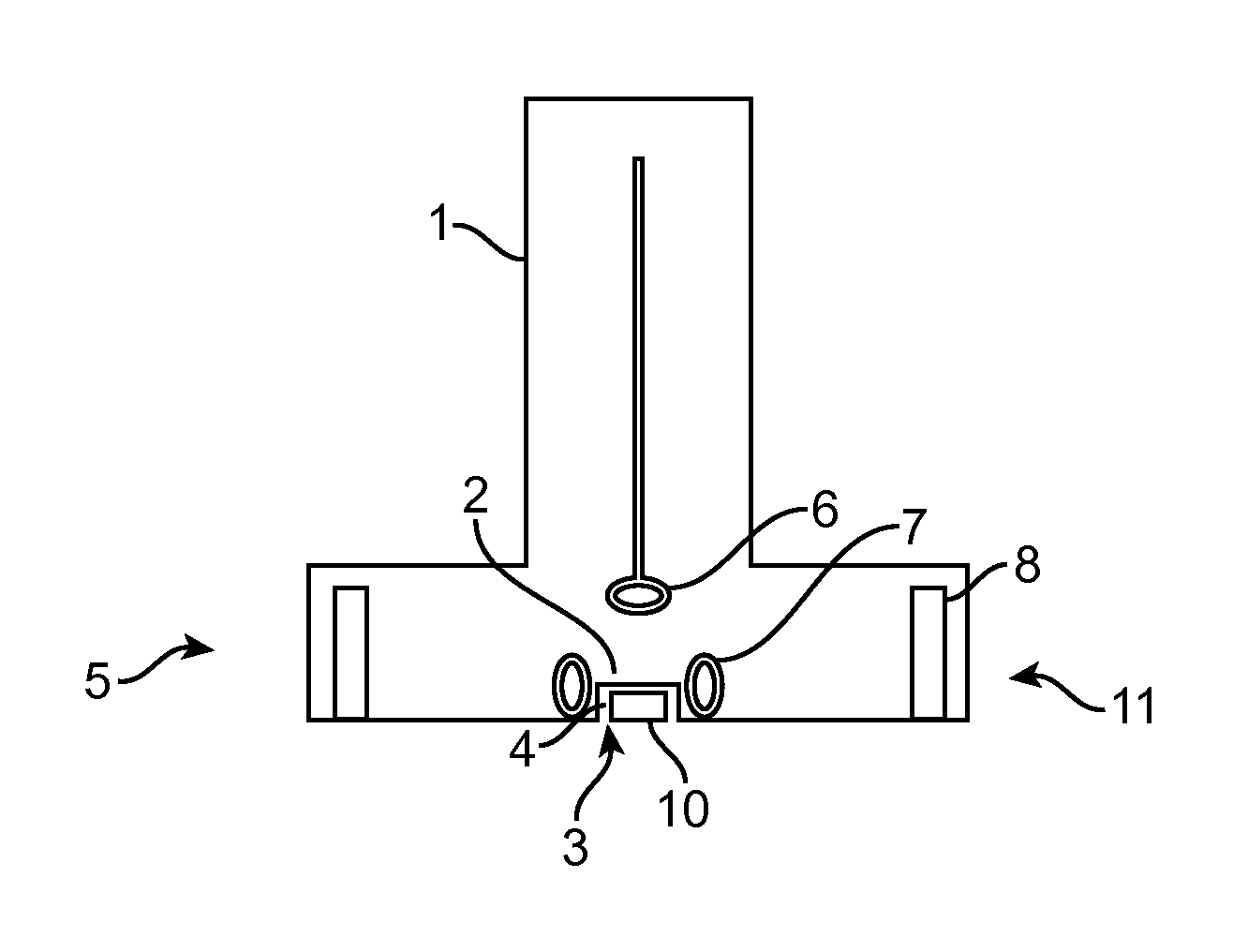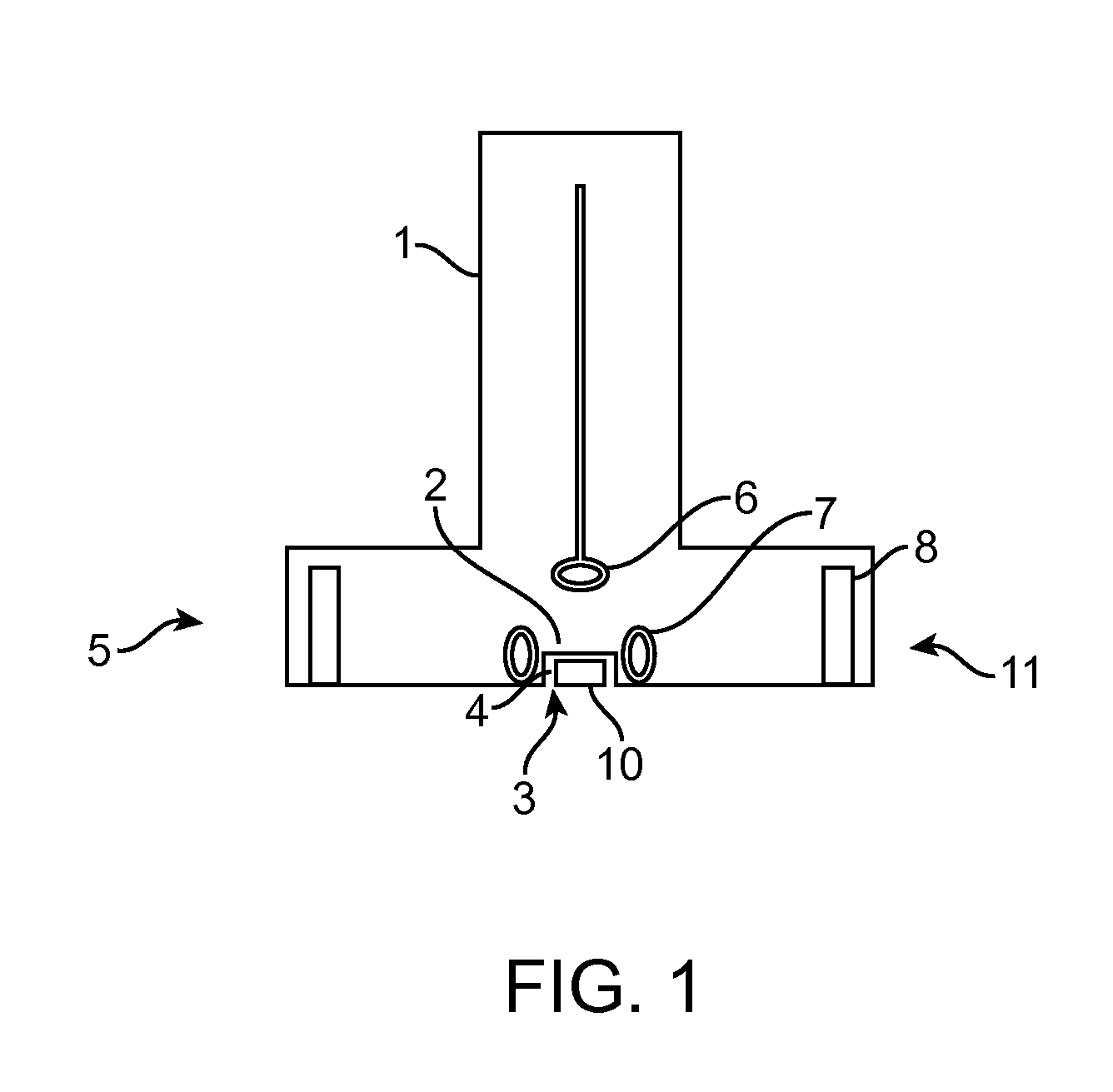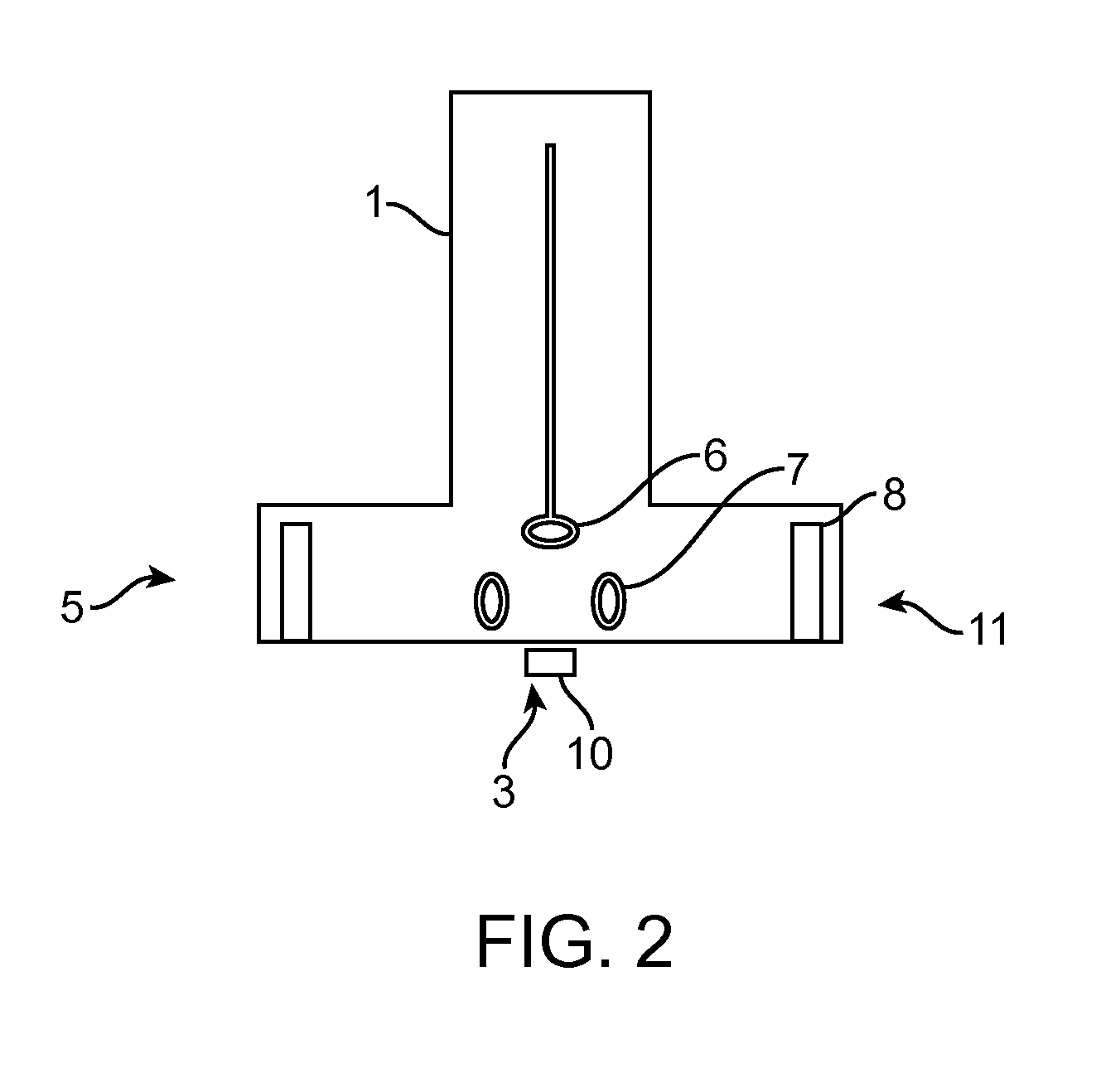Systems and methods for assessment of oxygenation
a technology of oxygenation and oxygenation, applied in the field of systems and methods for oxygenation assessment, can solve the problems of significant radiation loss of lgrs, and achieve the effects of reducing penetration depth, improving snr, and optimizing measurements
- Summary
- Abstract
- Description
- Claims
- Application Information
AI Technical Summary
Benefits of technology
Problems solved by technology
Method used
Image
Examples
Embodiment Construction
[0025]Disclosed herein are exemplary embodiments of a novel system and methods for measuring oxygen tension noninvasively or minimally invasively in either a human or animal subject. Oxygen tension measurement with the systems and methods described below are based upon the principle of electron paramagnetic resonance (EPR) oximetry. In the novel methods, any suitable paramagnetic probe for EPR oximetry such as india ink, coals, char, carbon black, lithium phthalocyanine, lithium naphthalocyanine, nitroxides, or trityl radicals is applied to a localized site on a subject and an EPR reader device consisting of a handheld scanner is used to excite and read the EPR probe material at the site of interest either under normobaric or hyperbaric pressure. The novel handheld scanner will apply a uniform magnetic field at the site of interest, excite the paramagnetic probes with a radiofrequency wave, measure the EPR signal, analyze the detected signal, and display the oxygen tension measured ...
PUM
 Login to View More
Login to View More Abstract
Description
Claims
Application Information
 Login to View More
Login to View More - R&D
- Intellectual Property
- Life Sciences
- Materials
- Tech Scout
- Unparalleled Data Quality
- Higher Quality Content
- 60% Fewer Hallucinations
Browse by: Latest US Patents, China's latest patents, Technical Efficacy Thesaurus, Application Domain, Technology Topic, Popular Technical Reports.
© 2025 PatSnap. All rights reserved.Legal|Privacy policy|Modern Slavery Act Transparency Statement|Sitemap|About US| Contact US: help@patsnap.com



